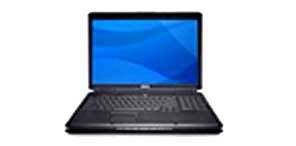
I remember when the “laptop” computer was an expensive luxury in our business; it made it out of the storeroom every now and then when one of us had an assignment on the road or had to take notes at the courthouse. Not the case any longer.
Notebook computers have become very competitive — comparing price to features like storage, speed and enhanced video display. Battery life has improved drastically and the device itself has slimmed down in size and weight and many businesses are taking notice of the new notebook.
As more small businesses go mobile, the use of notebook computers as day-to-day core business tools is increasing. In my own office, my notebook computer has replaced my desktop and I don’t ever think about going back.
In my experience working with clients who are increasingly using notebooks as desktop replacements – their main computing devices – I am surprised how many I find that are either not aware of, or, taking avoidable risks with their notebook PC.
Network and computer security experts agree that if you are considering or already using your notebook as a desktop replacement you need to protect it from four of the most common threats: data loss, unauthorized access, physical theft and malicious network attacks.
If your notebook is stolen, the scariest part for many businesses is not the cost of the hardware but the data on the hard drive: customer information, trade secrets, personnel details (social security numbers, addresses, etc.), competitive information and anything else that is personal or confidential.
Maybe your notebook is not stolen but you want to ensure that your own employees, contractors or office visitors are not able to access information that they shouldn’t.
There are two things you can do: 1) Encrypt data and 2) Limit access to the data to only authorized users
Consider this scenario. You are compiling information for the next month’s payroll and performance report on your employees. You export that information and share it with your HR manager. But, when your accountant calls for a copy, you should realize that he only needs to see the payroll data and you should separate the performance data or you may be unwittingly contributing to the practice of “unauthorized access”.
One of the best ways I know to physically secure your notebook computer is to be vigilant and keep it in sight. How do you treat your wallet, your purse, your child? You watch these precious things and people carefully. You’re always aware of where they are. Your notebook computer is no different.
If you’re in a public place, don’t leave your notebook on a table and think it’s going to be just fine. If you have it in your car, don’t leave it in the front seat where people passing by can see it. You might as well put a sign taped to your notebook that reads – STEAL ME.
And one risk that can’t be overstated, in my opinion, is to be aware that when your computer is connected to the Internet it’s like being on a public intersection in a “bad” part of town.
Everyone walking by you is not a “bad guy”, wanting to steal your money. However, you never know who is. To prevent “bad guys” from attacking your computer as it’s connected to the Internet you must ensure that you have tools in place to help secure it from viruses, malware, hackers and anything else that might come your way.
Take a little time to learn about and install a good anti-virus program and update it regularly. Keep your firewall active remembering that everyone else who is sharing your Internet connection in those popular “hot spots” has access to any files, drives or other devices that you have made available while you are “docked” at the office.
And don’t forget to backup regularly. It will save you hours (or days) and money down the road.
Discover more from HISTORIC CITY NEWS
Subscribe to get the latest posts sent to your email.


Comments are closed